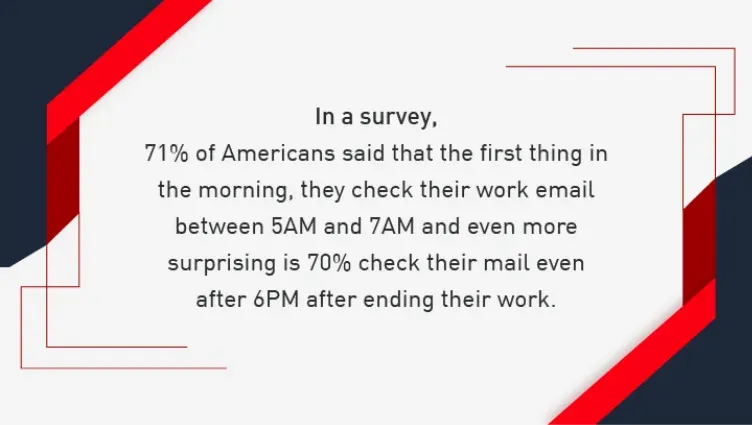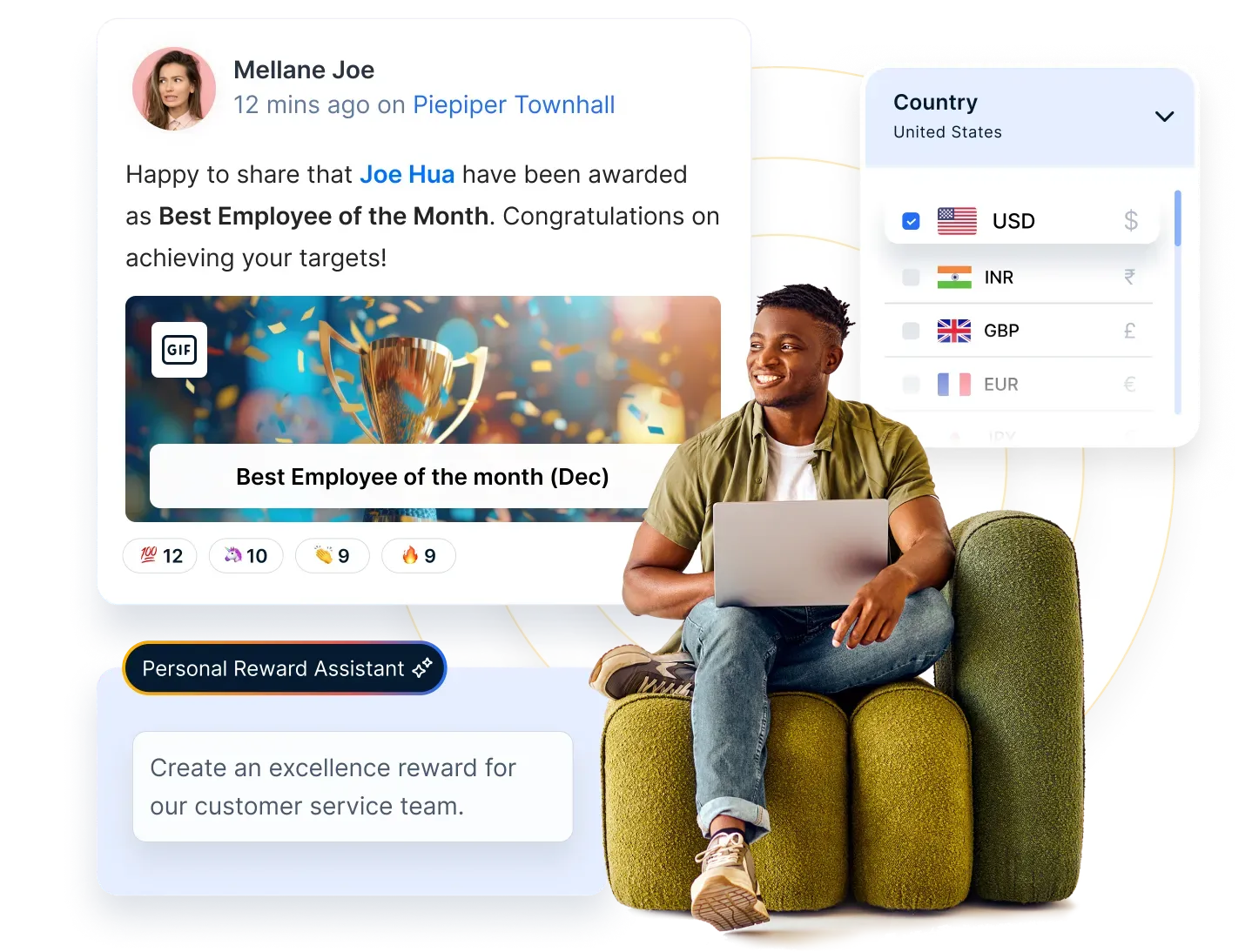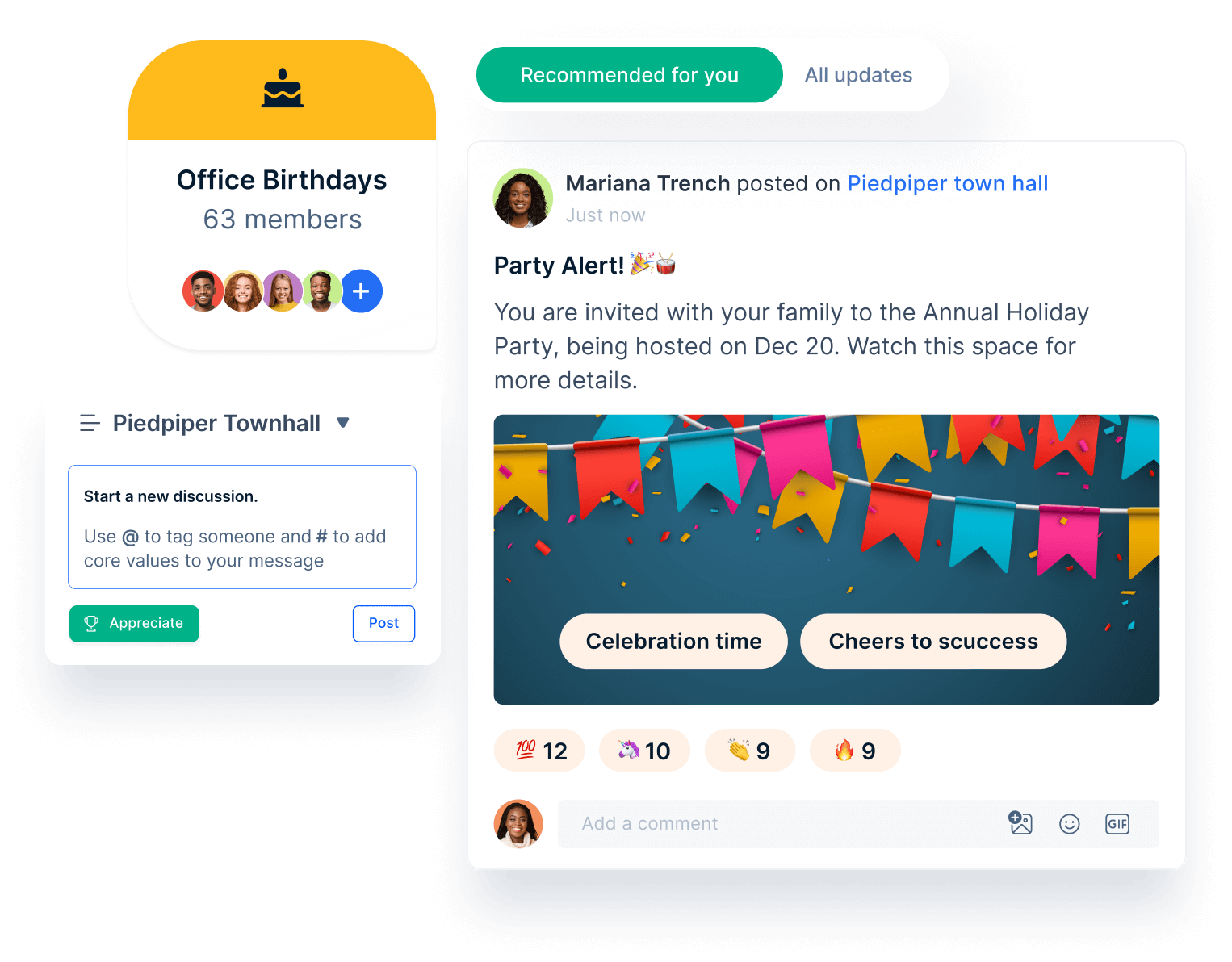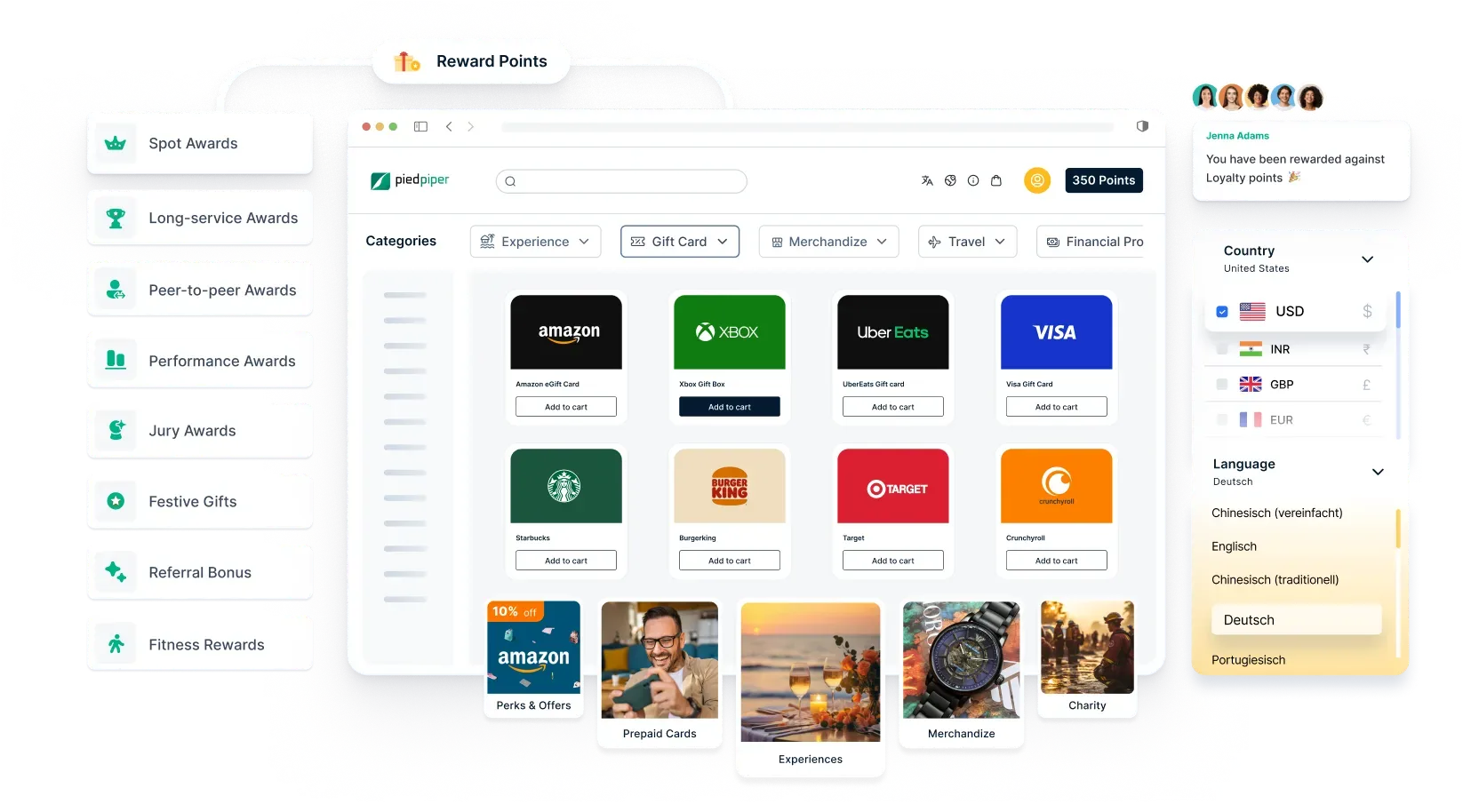The Evolution of the 40 Hour Work Week: Why Smart Work Beats Long Hours in Today’s Workplace
Discover the history of the 40 hour work week, its impact on modern work culture, and why flexible, smart work models are key to happier, more productive teams.
On this page
- History of the 40-hour work week model
- Evolution of the 40-hour workweek model
- Distractions and working outside off-hours - A recurring cycle?
- Case Study: How Netflix Promotes a Culture of 'People Over Process'
- Is opting for the 40-hour workweek an effective move?
- Alternatives to the 40-hour workweek model
- Measure results, not time
- The problem: Overworked & under-recognized employees
- The solution: Empuls' AI-powered employee engagement platform
- Final thoughts
With the use of, it is widely the case that you are assumed to be available 24/7.
In the corporate culture, it can be often seen that working long hours and staying up late has become a norm. Be it due to client deliverables or last-minute changes in reports; people are usually working longer hours in expectation of being rewarded for it through the means of a promotion or an appraisal.
Since most companies in India are often working with a client base that is both domestic & international, it has become increasingly important for companies to have individuals who can work as per the requirement of that particular client across different time slots.
But this culture can do more harm than good and instead prove to be ineffective as the employees will feel more stressed and unmotivated leading to less productivity levels at the job.
Looking back to the ancient culture of working 8 hours, 5 days a week – Would you want to know who created the 40-hour workweek model?
Read on to know more about the 40-hour workweek model, its history, and how it can help ensure employees put in their best performance at work.
History of the 40-hour work week model
During the Industrial Revolution in the mid-1800s, average workers in the transportation and manufacturing sectors continued to work more than 100 hours a week. In 1926, one of the first businesses to implement a 40-hour workweek was the Ford Motors Company.
They took a big step by cutting down the average workday to 8 hours for its employees, which was a shocking move as per the industrial sector and the existent economy of that time. Later in 1938, the Fair Labor Standards Act made it official by cutting down the workweek to 44 hours. The act was amended and reduced to 40 hours a week in 1940.
A closer look at the 40-hour workweek's history reveals that the concept first came into existence when technologies and desk jobs weren't common. With the abundance of physical labor, hours were decided on the basis of physical capabilities.
In today's scenario, with advancements in machines and technology, the work is performed more efficiently and we have the comfort of doing it anywhere, be it any café, or from the comfort of our own homes.
Evolution of the 40-hour workweek model
In 1930, John Maynard Keynes had made a startling prediction that his grandkids would work just for 15 hours a week. At that point of time, Keynes saw industries booming and assumed the trend towards more efficient work practices to come into place.
When a worker would earn enough to be able to cover all of his necessities and luxuries, he thought they'd opt out to spend more time on leisure and live a life of comfort with only 2-3 days working in a week.
In Sweden, the concept of a short work week came to light in the 1980s. There was no reduction in the worker's pay. This resulted in improved productivity levels on the job.
It was proved that when workers reduced to a six-hour day, there was a reduction in absenteeism, they remained healthy, happy, and could work for longer hours with more productivity. HR experts mentioned that this concept was only possible when the six hours were used efficiently without any distractions.
In March and April of 2018, a New Zealand firm known as Perpetual Guardian ran an experiment to let its employees work for 32 hours instead of 40 in a week for some 240 employees without a decrease in their pay.
Here, they found positive support for the four-day work week – they noticed a 24% improvement in the work-life balance of the employees, and stress decreased by 7% among all of them.
Distractions and working outside off-hours - A recurring cycle?
While we talk about a normal 9-to-5 rigorous workday, with the ease of technology, employees are expected to respond to every work call or mail even after their work hours end.
This adds more pressure and in turn stress to the employee leaving no time for spending with their family and friends. This is also the main reason for experiencing burnout at the job.
In a survey, 71% of Americans said that the first thing in the morning, they check their work email between 5AM and 7AM and even more surprising is 70% check their mail even after 6PM after finishing their work.

With employees working nonstop, many companies are witnessing an employee-burnout crisis.
A recent Gallup study revealed that about two-thirds of full-time employees experience burnout on the job. This can incur huge costs to the organization. Burnout usually results in low morale, diminished commitment, and a huge turnover.
On the other hand, the costs for the employees will be increased risk to health conditions like type 2 diabetes, gastrointestinal issues, high cholesterol, etc.
A 40-hour workweek schedule is a relatively simpler way to manage workload at the organization and ensure that the employee's health and productivity don't get impacted in a negative manner.
Case Study: How Netflix Promotes a Culture of 'People Over Process'
The unfeasible and stressful culture is replaced by companies like Netflix that truly have gone ahead in creating high levels of employee engagement and letting them grow personally.
They give their employees the required freedom and responsibility. The company is built on performance-driven teams that stay honest with their work and also collaborate with each other to provide constructive feedback.
They have truly revolutionized the future by providing the highest market pay with instilling flexibility in the company culture. They don't track vacation days or work hours constantly, instead expect accountability from each employee to perform their best.
Having minimized rigid rules, Netflix believes that flexibility is a key component of how they wish to do business in the long run.
Is opting for the 40-hour workweek an effective move?
Companies are largely adopting the four-day workweek resulting in satisfying results and happier employees.
In 2019, Microsoft Japan was seen introducing a project called Work-Life Choice Challenge Summer 2019, offering its 2300 employees to have Fridays off without a decreasing pay for the whole month of August.

This resulted in a staggering 40% boost in their productivity and increased levels of motivation. In addition to this, the firm saw a loss in costs with 23% less electricity consumption and employees taking 25% less time off.
What are the pros?
The pros are listed below:
1. Employees are more focused
With having a four-day workweek, the employees will have a sense of responsibility to compensate for the lost day and plan their work more effectively.
2. Environmental benefits
Countries with shorter working hours will reduce each employee's carbon footprint by eliminating the pollution caused by commutes to work.
What are the cons?
The cons are listed below:
1. Difficult to implement in certain sectors
The four-day workweek can be only successful in some industries. It has proved to yield amazing employee and employer benefits, but in terms of providing customer service, it can get difficult. With the evolution of chatbots & AI-powered websites, this problem can be solved as it would provide customers a reliable means to get their queries or complaints solved instead of office-based staff.
2. An expensive model if implemented incorrectly
If the employees failed to meet their work requirements, this model can turn out to be costly to the firm. In Sweden's two-year experiment with reducing the workweek to 30 hours while continuing a five-day structure, in the end, it proved to be costly to uphold even with increased levels of productivity.
Alternatives to the 40-hour workweek model
Here are some alternatives to 40-hour workweek model:
1. Flextime
This is the model wherein employees can decide their own working hours according to their own comfort.
Many companies have introduced flexible working schemes for their employees following the current trend, but usually, these schemes don't provide a huge variation to a fixed working time from 9 to 5.
Remaining present while the 'core hours' in the office still is a necessity. Presenteeism still matters, and it demands to be in sight of the Boss or upper managers every time or else you can be easily forgotten. So, the concept of Work from Home is still seen as an exception.
Being in the twenty-first century, it's time to change from the old long hour working culture that dominated the twentieth century. Though, after Covid-19 affected our economy, companies had no choice other than switching to work from policies.
The economy can still get influenced and normalize the concept of working from home, the huge change only occurs when they amend their policies to allow 'Work from Home' to the employees even after the pandemic ends.
This kind of work model ensures that the employees are more satisfied and have a proper work-life balance. However, there can be a few issues in the form of difficulty in managing each employee and conflicts in schedule.
2. Job satisfaction
With rising millennials in the workforce, it is high time to change the age-old structure of 9 to 5-time jobs. For millennials, job satisfaction carries more importance than offering just a high salary with strenuous and rigid working policies.
A study conducted by the American Sociological Review states that workers who had flex hours at their firms were healthy, stress-free, and slept better at night than their nine-to-five counterparts. Overall, they were happier compared with the ones with a rigid schedule at their jobs.
Employees are more likely to be happier in their jobs as they will have control on their work hours, leading to better growth and profitability for the organization. It also builds a better relationship between the employers and the employees and in turn will promote increased transparency at the job.
3. Better retention
Employee turnover can be expensive and can result in low morale for the employees at the company.
Various studies show that flex working can be a huge factor for the company's success as employees are highly satisfied with their jobs. Due to the flexible work schedules, flex employees are more likely to retain at the job even during hard times.
If we take note, millennials notice perks and benefits more than just a high package at the job. To retain ambitious and talented people, you need to reconsider your firm's policies to keep the employees fulfilled.
Measure results, not time
As we come out of the global pandemic, Corporate leaders have to adapt to empathetic and resilient ways of working. There is enough evidence that people are switching to jobs that provide a positive atmosphere to grow and, most importantly, the right work-life balance. So, they will look out for work environments where personal life is emphasized as much as work-life.
The new approach shows that there has been a shift of control from employers to employees. Where there are trust, co-operation, and self-empowering practices for the employees, those organizations will be preferred for working in the coming future over others.
Despite employees performing their best, they are judged by their inputs, and not the results, thereby hindering their creativity and affecting their work performance which can gradually discourage them from contributing newer ideas to a client project.
If your business encourages micromanaging employees' time, that's just going to discourage the team and give out no benefit. If you let employees decide their own time, and encourage them to experiment with different techniques, it will boost their confidence and trust in you.
If you are always concerned about the whereabouts of your employees, they'd be pressured and not be able to bring the required results needed for the job.
The problem: Overworked & under-recognized employees
Modern work culture, especially in global settings like India, often glorifies long hours, "always-on" availability, and presenteeism. This leads to stress, burnout, reduced productivity, and disengaged employees. 71% of Americans check work email before 7 AM, and 70% continue after 6 PM—burnout is real.
The solution: Empuls' AI-powered employee engagement platform
Empuls addresses this evolving workplace reality by shifting the focus from hours logged to impact delivered and employee well-being, by offering:
1. Recognition over rigidity

Empuls promotes in-the-moment recognition, smart nudges, and personalized milestones powered by Em, the AI bot. Automated service awards, work anniversaries, and birthday wishboards celebrate accomplishments beyond hours.
2. Flexibility that works

Supports lifestyle benefits via Flexible Fringe Benefits—Remote Work Allowance, Meal & Travel, Fitness, Upskilling, and more. Empuls doesn’t just enable work-from-home—it supports it with relevant perks and allowances.
3. Surveys that listen & adapt

Lifecycle, eNPS, and pulse surveys allow leadership to act on stress triggers and burnout signals early. Personalized feedback mechanisms shift control to the employee—echoing the “measure results, not time” philosophy.
4. Social intranet = Human connection

Empuls’ social intranet promotes transparency, updates, peer conversations, and group communities to reduce isolation in remote or hybrid teams.
5. Modern rewards aligned with the modern workforce

A 1M+ global rewards catalog with instant gift cards, experiences, and wellness options encourages balance and appreciation over grind culture.
The 40-hour workweek was a response to industrial-age labor abuse. Today, digital overload and blurred boundaries are the new challenges. Platforms like Empuls are reimagining employee engagement by:
-> Automating appreciation.
-> Prioritizing outcomes.
-> Supporting mental & financial wellness.
-> Fostering meaningful social interaction.
Results from Empuls users show:
-> 67% boost in eNPS.
-> 87% of employees are less likely to leave.
-> 40% reported fewer wellness concerns.
Empuls isn’t just a tool—it’s a cultural enabler. While companies debate 4-day weeks or flextime, Empuls empowers them with the infrastructure to listen, adapt, and care, regardless of the schedule format. Schedule a call now!
Final thoughts
While you go choosing a model for your company, remember it's not a one-size-fits-all solution. In the current era, 9 to 5 clearly is an outdated concept that needs to be optimized when newer-efficient working methods and technologies keep adopted in the economy.
With the rise in remote work and freelancing being chosen as a career, companies need to consider how they can recruit and offer perks to their employees in order to retain them to the company.
If workers are expected to work on their jobs 24/7, wouldn't they have done it for themselves instead? Why not encourage smart work rather than counting how many hours the employees clock in on their jobs?
With new innovations, it's entirely possible to work efficiently and focus on the work to be accomplished rather than counting how much free time each employee gets. Time doesn't matter. It's the work that is accomplished in that time which does.


















